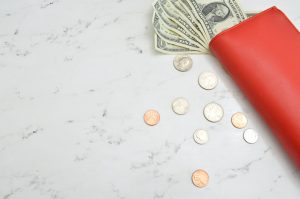Forex trading is a popular financial market where traders aim to make a profit by buying and selling different currencies. One of the key aspects of forex trading is understanding how to calculate profit based on lot size and leverage. In this article, we will explain this calculation in depth and provide some examples to help you better understand how it works.
What are lot size and leverage?
Before we dive into the calculation of profit, let’s define the terms “lot size” and “leverage.” Lot size refers to the amount of currency you are trading in a single transaction. In forex trading, lot sizes can vary from 1,000 units to 100,000 units or more. The standard lot size is 100,000 units, but traders can also trade in smaller lot sizes such as mini lots (10,000 units) or micro lots (1,000 units).
Leverage, on the other hand, is the amount of borrowed funds a trader uses to increase their trading position. Leverage allows traders to open larger positions than their account balance would normally allow. For example, a trader with a $1,000 account balance and a leverage of 1:100 can open a position worth $100,000.
How to calculate profit on forex based on lot size and leverage?
To calculate profit in forex trading, you need to know the lot size, the leverage, the entry price, and the exit price. Once you have this information, you can use the following formula to calculate your profit:
Profit = (Exit Price – Entry Price) x Lot Size x Leverage
Let’s break down this formula into its individual components:
– Exit Price: This is the price at which you close your position. If you are buying a currency pair, the exit price will be higher than the entry price, and if you are selling a currency pair, the exit price will be lower than the entry price.
– Entry Price: This is the price at which you open your position. If you are buying a currency pair, the entry price will be lower than the exit price, and if you are selling a currency pair, the entry price will be higher than the exit price.
– Lot Size: This is the number of units of currency you are trading. The larger the lot size, the more profit or loss you can make on a single trade.
– Leverage: This is the amount of borrowed funds you are using to increase your trading position. The higher the leverage, the greater the potential profit or loss.
Example 1:
Let’s say you want to trade the EUR/USD currency pair with a lot size of 10,000 units and a leverage of 1:100. You buy the currency pair at an entry price of 1.2000 and sell it at an exit price of 1.2100.
Profit = (1.2100 – 1.2000) x 10,000 x 100
Profit = $1,000
In this example, you make a profit of $1,000 on a single trade.
Example 2:
Let’s say you want to trade the GBP/USD currency pair with a lot size of 50,000 units and a leverage of 1:200. You sell the currency pair at an entry price of 1.4000 and buy it at an exit price of 1.3900.
Profit = (1.4000 – 1.3900) x 50,000 x 200
Profit = $10,000
In this example, you make a profit of $10,000 on a single trade.
As you can see from these examples, the profit you can make on a forex trade depends on the lot size and leverage you use, as well as the entry and exit prices. It’s important to remember that forex trading involves risk, and you should always use proper risk management techniques to protect your account balance.
In conclusion, calculating profit in forex trading based on lot size and leverage is a simple calculation that can help you determine the potential profit or loss of a trade. By understanding this calculation, you can make more informed trading decisions and manage your risk effectively.






